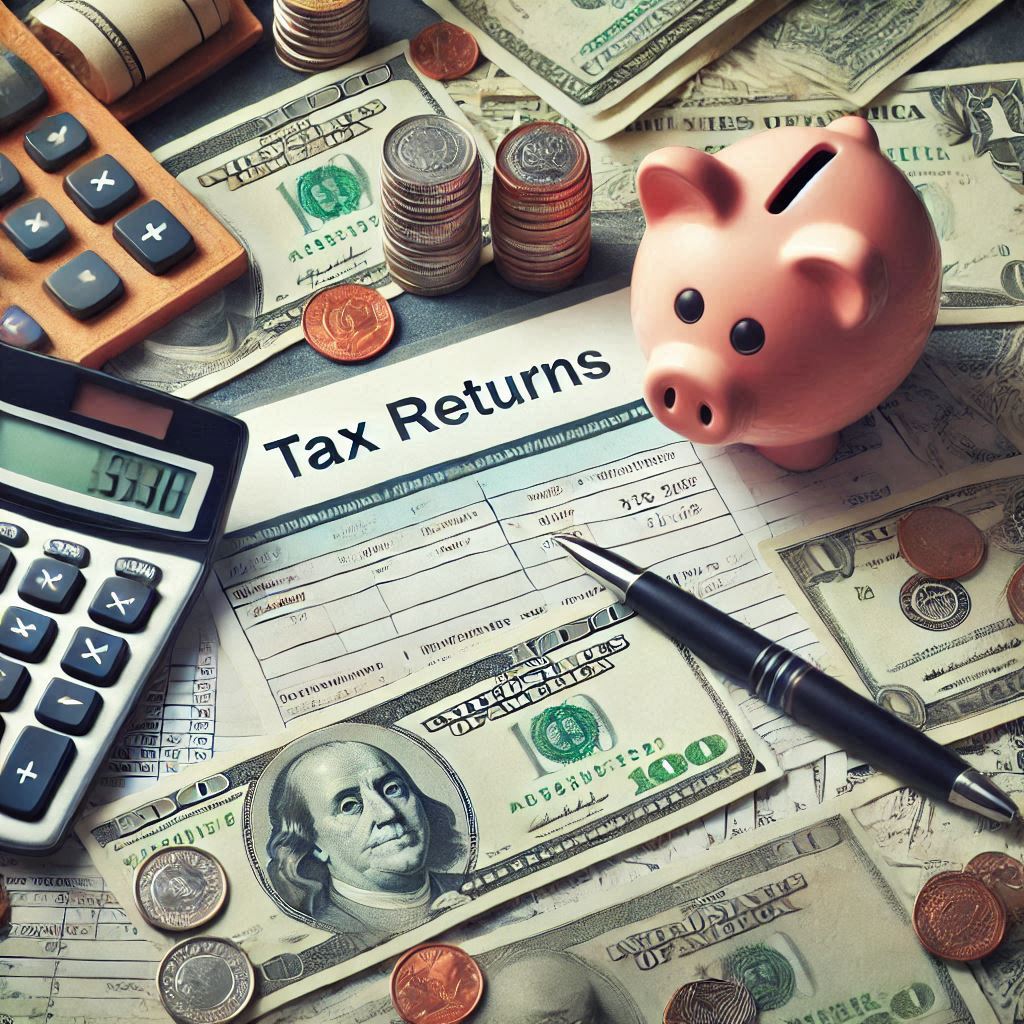Introduction
Life is full of surprises, some more welcome than others. While we all hope for pleasant surprises, reality often throws us curveballs in the form of unexpected expenses. That’s where an emergency fund comes in. Think of it as your financial safety net, ready to catch you when life takes an unexpected turn. In this comprehensive guide, we’ll explore the importance of having an emergency fund, determine how much you should save, share quick ways to jumpstart your savings, and discuss the best places to keep your emergency stash. Let’s dive in!
Disclaimer
The information provided in this article is for educational and informational purposes only and should not be construed as financial advice. I am not a financial advisor. Please consult with a certified financial professional before making any financial decisions.
The Importance of an Emergency Fund
Imagine this: your car breaks down, your roof starts leaking, or you face a sudden job loss. Without an emergency fund, these situations can quickly turn into financial nightmares. Here’s why having an emergency fund is crucial:
1. Peace of Mind: Knowing you have a financial cushion, can reduce stress and help you sleep better at night. It’s comforting to know you’re prepared for life’s unexpected expenses.
2. Avoiding Debt: Without an emergency fund, you might be tempted to use credit cards or take out loans to cover unexpected costs. This can lead to high-interest debt that can take years to pay off.
3. Financial Stability: An emergency fund helps maintain your financial stability by ensuring you have money set aside for emergencies. This prevents you from dipping into your savings meant for other goals or your longterm investments.
4. Flexibility: Having a stash of cash gives you the flexibility to make better decisions. For example, if you lose your job, you won’t feel pressured to accept the first offer that comes along—you can take your time to find the right fit.
How Much Should You Save for Emergencies?
The million-dollar question: how much should you save for emergencies? The answer varies based on your personal situation, but here are some general guidelines:
1. Basic Rule of Thumb: Most financial experts recommend saving three to six months’ worth of living expenses. This should cover necessities like rent or mortgage, utilities, groceries, transportation, and insurance.
2. Evaluate Your Situation: Consider factors like job stability, income level, and dependents. If you have a stable job and a dual-income household, three months’ worth of expenses might suffice. However, if your income is irregular or you have dependents, aim for six months or more.
3. Consider Your Expenses: Make a list of your monthly expenses and multiply by the number of months you want to cover. This will give you a target savings amount. Don’t forget to account for any irregular expenses, like annual insurance premiums or property taxes, if applicable.
Quick Ways to Jumpstart Your Emergency Fund
Building an emergency fund might seem daunting, especially if you’re starting from scratch. But don’t worry—here are some quick and easy ways to get started:
1. Automate Your Savings: Set up an automatic transfer from your checking account to your savings account. Even small amounts, like $25 or $50 per paycheck, can add up over time.
2. Cut Unnecessary Expenses: Review your budget and look for areas where you can cut back. Maybe it’s dining out less, canceling unused subscriptions, or shopping sales more diligently. Redirect those savings into your emergency fund.
3. Side Hustles: Consider taking on a side hustle to boost your income. Whether it’s freelancing, pet sitting, or driving for a rideshare service, extra income can significantly speed up your savings.
4. Sell Unused Items: Declutter your home and sell items you no longer need. Platforms like eBay, Craigslist, and Facebook Marketplace make it easy to turn your clutter into cash.
5. Use Windfalls Wisely: Got a tax refund, bonus, or monetary gift? Resist the urge to splurge and instead, deposit it into your emergency fund.
Where to Keep Your Emergency Savings
Now that you’re building your emergency fund, you might be wondering where to stash your cash. Here are some options:
1. High-Yield Savings Account: This is a popular choice because it offers easy access to your funds while earning interest. Look for an account with a competitive interest rate and no monthly fees.
2. Money Market Account: Similar to a savings account but typically offers higher interest rates and in some cases, check-writing privileges. Be sure to compare fees and withdrawal limits.
3. Certificates of Deposit (CDs): CDs offer higher interest rates than savings accounts, but your money is locked in for a set period. This can be a good option for a portion of your emergency fund if you have other accessible savings.
4. Cash Management Account: Offered by investment firms, these accounts combine features of checking, savings, and investment accounts. They often offer competitive interest rates and easy access to your money.
5. Avoid Investments: While it might be tempting to invest your emergency fund for higher returns, it’s crucial to keep this money easily accessible and safe from market volatility. Stick to accounts that offer liquidity and stability.
Additional Tips for Building Your Emergency Fund
1. Set Specific Goals: Break down your emergency fund goal into smaller, manageable milestones. Celebrate your progress along the way to stay motivated.
2. Reassess Regularly: Life changes, and so do your financial needs. Revisit your emergency fund goals annually or after significant life events, such as marriage, having a child, or changing jobs.
3. Avoid Temptation: Keep your emergency fund separate from your regular checking account to avoid the temptation to dip into it for non-emergencies. Consider naming the account “Emergency Fund” as a reminder of its purpose.
4. Emergency Fund vs. Savings: Remember that your emergency fund is for unexpected expenses, not planned purchases like vacations or home renovations. If possible, keep separate accounts for different savings goals to avoid confusion.
5. Teach Your Family: If you have a family, involve them in the process of building and maintaining the emergency fund. This can be a valuable lesson in financial responsibility and preparedness.
Common Myths About Emergency Funds
1. “I don’t need an emergency fund; I have a credit card.” While a credit card can provide temporary relief, relying on it can lead to high-interest debt. An emergency fund offers a debt-free solution.
2. “I can’t afford to save for an emergency fund.” Start small. Even saving a few dollars a week can add up over time. The key is consistency and gradually increasing your savings rate as your financial situation improves.
3. “My regular savings can double as my emergency fund.” Mixing your emergency fund with your regular savings can be risky. It’s best to keep them separate to ensure your emergency fund is always available when needed.
Frequently Asked Questions
1. How do I start an emergency fund if I’m living paycheck to paycheck? Look for ways to cut back on discretionary spending and save even a few dollars per week. Consider automating your savings to make it easier.
2. Can I use my emergency fund for non-emergencies? Ideally, no. Your emergency fund should be reserved for unexpected expenses, such as medical emergencies, car repairs, or job loss. For planned expenses, create separate savings goals.
3. Should I invest my emergency fund? It’s best to keep your emergency fund in a liquid and stable account, such as a high-yield savings account or money market account. Avoid investments that carry risk or lock up your funds for long periods.
4. How can I stay motivated to build my emergency fund? Set specific goals and track your progress. Celebrate milestones along the way, and remind yourself of the peace of mind and financial stability that comes with having an emergency fund.
Conclusion
Building an emergency fund is one of the most important steps you can take to secure your financial future. It provides peace of mind, helps you avoid debt, and ensures financial stability during life’s unexpected events. By understanding the importance of an emergency fund, determining how much to save, finding quick ways to jumpstart your savings, and choosing the best place to keep your funds, you can create a robust financial safety net. Start today, and you’ll be better prepared for whatever surprises life throws your way.
By following the steps outlined in this guide and utilizing the resources provided, you’ll be well on your way to building a solid emergency fund. Remember, the key to financial security is preparation and consistency. Start small, stay disciplined, and watch your savings grow. Your future self will thank you.
#Ad – Explore These Popular Items on Amazon
 ANRABESS Women Sherpa Fleece Sweatshirt Half Zip Pullover Casual Warm Fuzzy Sweater Coat 2024 Fall Fashion Outerwear
ANRABESS Women Sherpa Fleece Sweatshirt Half Zip Pullover Casual Warm Fuzzy Sweater Coat 2024 Fall Fashion Outerwear Apple AirPods 4 Wireless Earbuds, Bluetooth Headphones, with Active Noise Cancellation, Adaptive Audio, Transparency Mode, Personalized Spatial Audio, USB-C Charging Case with AppleCare+ (2 Years)
Apple AirPods 4 Wireless Earbuds, Bluetooth Headphones, with Active Noise Cancellation, Adaptive Audio, Transparency Mode, Personalized Spatial Audio, USB-C Charging Case with AppleCare+ (2 Years) XIEERDUO Long Puffer Vest Women Outerwear Reversible Fleece 2024 Fall Winter Warm Sleeveless Zip Up Hoodie Coat with Pockets
XIEERDUO Long Puffer Vest Women Outerwear Reversible Fleece 2024 Fall Winter Warm Sleeveless Zip Up Hoodie Coat with Pockets Infantino My 1st Tumbler – Adorable Miniature Tumbler with Toddler-Friendly Straw and Handle, Encourages Hydration, Easy to Clean, 9 fl. oz, Alpine
Infantino My 1st Tumbler – Adorable Miniature Tumbler with Toddler-Friendly Straw and Handle, Encourages Hydration, Easy to Clean, 9 fl. oz, Alpine Gacaky Women’s Lightweight Floral Embroidered Cropped Quilted Jacket Winter Warm Button Down Puffer Jacket Coat with Pockets
Gacaky Women’s Lightweight Floral Embroidered Cropped Quilted Jacket Winter Warm Button Down Puffer Jacket Coat with Pockets





5 thoughts on “Emergency Funds: Why You Need One and How to Build It”